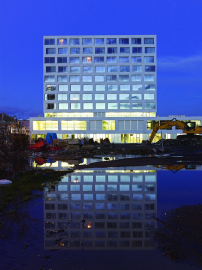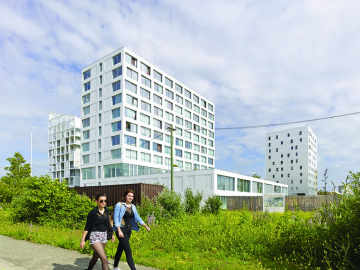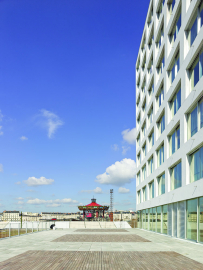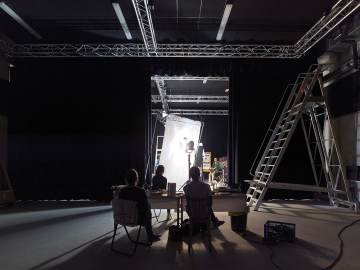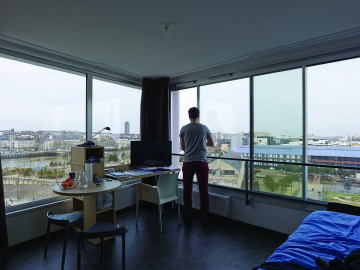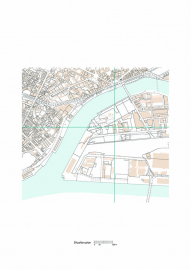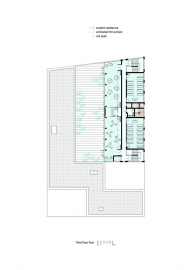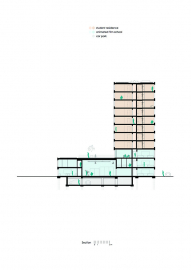ESMA, Animated Film School and student residence in Nantes
The ESMA-CINECREATIS program gathers an animated film school and a student residence.
It is part of the redevelopment of Nantes former shipyards, the Parc des Chantiers Navals and takes its place among the former shipbuilding infrastructures and their ‘building set’ filled with ramps, boat slipways and booms.
The building is composed of a two levels plinth taking up the whole plot of land and a plain volume rising at around 32 m, corresponding the Titans cranes characterizing this bank of the Loire River facing the 18th century quai de la Fosse.
The plinth volume offers a geography connecting the school program with principal orientations of the site : it is hollowed out by a double patio marking the entrance and opening a single wide window as a display of the school towards the parc des chantiers. The third floor cafeteria opens onto a large terrace facing a broad panorama toward the River and the City.
Whereas the budget for this operation turned out to be quite tight, its location on the west end of the Île de Nantes is undoubtedly exceptional. The site offers great views onto the former shipyards turned into a urban industrial park (Parc des Chantiers Navals, landscape architect Alexandre Chemetoff), the Loire River and the banks of the Old City.
As typological innovation on the student studio flats proved impossible the architectural work focused on offering each room the largest window onto this tremendous landscape. On the opposite, the film school program consisted of many blind rooms (film studio and computer rooms). Made the most compact, it offers a 3 levels pedestal for the panoramic rooms.
On counter shot, the façade geometric pattern formed by the large identical windows address the city an easily identifiable building which height compares the cranes and warehouses of the former shipyards skyline.
To address this widely open landscape and the tall figures that appear here and there, its architecture resorts to very few materials and implementation details, both rustic and sophisticated.
Cost optimisation
To rationalize the construction, the studio flats where given a simple rectangular shape open on its smaller side by a large window. It slides open to minimize its impact on the room as its very thin aluminium joinery maximizes the view. The interior reflecting curtains protect the rooms from overheating on summer days.
Cost optimisation also led to reducing the number of building trades. The joinery set apart, the whole façade is only poured in place concrete with mineral coating. The embrasured window ledges were cast with their rainwater evacuation pipe.
A European construction work
The client is from Montpellier a French city close to Spain. They selected a Catalan contractor. Despite the tedious switch of normative context, they brought the construction a valued know-how (and smaller shuttering panels that proved much more flexible).

